My French Lingerie: ‘Behind the Seams’ exhibition, Paris – passion, corsets & codpieces
“Vanity is but the surface.”
– Blaise Pascal
While the 17th century French philosopher might have cautioned against the veneer of narcissistic pride, his mathematical faculties would have had to appreciate the engineering prowess underneath the surface of fashion.
Nearly two hundred undergarments on display at the current exhibition ‘Behind The Seams: An Indiscreet Look at the Mechanics of Fashion’ at the Musée des Arts Décoratifs reveal how and to what extent we have contorted our bodies over the centuries. Vanity continues to thrive, both above and below the surface.
The exhibition explores the complex structures that twist, push, tighten, raise, flatten and manipulate our bodies from the 14th century to today. Undergarments such as iron corsets, caged crinolines and fake derrières have transformed women in their pursuit of the perfect silhouette, while codpieces and padded everything have enhanced men’s virility.
Ceinture pour homme, circa 1900 – 1930; and Faux-cul circa 1887, UFAC collection.Before personal trainers, fad diets, cosmetic surgery and Spanx, reshaped bodies along with the promise of a ‘better you’ came by way of whalebones, hoops, lacing, straps, hinges and springs. While fabrics and attitudes have since relaxed, contemporary designers such as Jean-Paul Gaultier (pictured left), Christian Lacroix and Vivienne Westwood, continue to modernize many of these references for their collections.
Jean Paul Gaultier 2008-2009Corset maker Melanie Talkington contributed 38 pieces to the show and worked closely with the curator Denis Bruna and his team to put together the exhibition.
Melanie owns ‘Lace Embrace Atelier’ in Vancouver, Canada and I had the pleasure of chatting with her while she was in Paris. Effortlessly charming and, of course, perfectly poised in one of her own handmade corsets, Melanie shared her knowledge and passion.
When did your passion for corsets begin?
I was about eight years old when I saw the movie ‘The Best Little Whorehouse in Texas’ and I was fascinated with the opening scene of all the women dancing around in their lingerie.
Do you remember the first corset you bought?
It was a red-wool corset from the 1860s. It’s very rare to find corsets – especially coloured ones – from this period. It was completely moth-eaten, but a perfect study piece with whalebone and flossing (decorative embroidery.)
What three words come to mind instantly when you think of the word ‘corset’?
Love, curve, color.
Do you feel more ‘you’ in or out of a corset?
Ha ha! I always feel like me in or out of a corset! However, wearing corsets gives me a powerful, sexy confidence.
What kind of corset are you looking for now?
No two corsets are alike, but I would like to own one in every color. My biggest desire is to find a green silk satin antique corset and yellow one. But, I’m not in a hurry – that’s the pleasure of the hunt, you never know what is out there left to be found!
What’s so special about French corsets?
My favorite corsets are French. They are beautifully designed and delicately made with the finest lace, silk and intricate flossing. While synonymous with style, there is also a sense of playfulness and coyness to French corsets. I find myself asking questions and wanting to know more about the women who wore them.
You have been very involved with helping put the exhibition together. Describe a magical moment.
There were so many moments. The first was my flight to Paris in January at a time when heavy snowstorms created delays and cancellations. The taxi drove me from the airport through the dark, slushy streets and pulled up to the Louvre around 10pm. I was escorted to the basement where I was greeted by the curator and his team. As I unpacked my collection, a chorus of “oohs” and “ahhs” echoed. It was, indeed, a magical and unforgettable moment to share my collection with others who have the same passion.
What is the history behind the white corset circa 1860 – 1870?
The white corset was made with a special patent loom that creates a woven garment complete with all shaping: bust, hips, waist. Even the bones were woven instead of using traditional pieces of wood. The only place with sewing is at the center front to insert the busk (stiff strips with metal clasps) and the centre back for the bone.
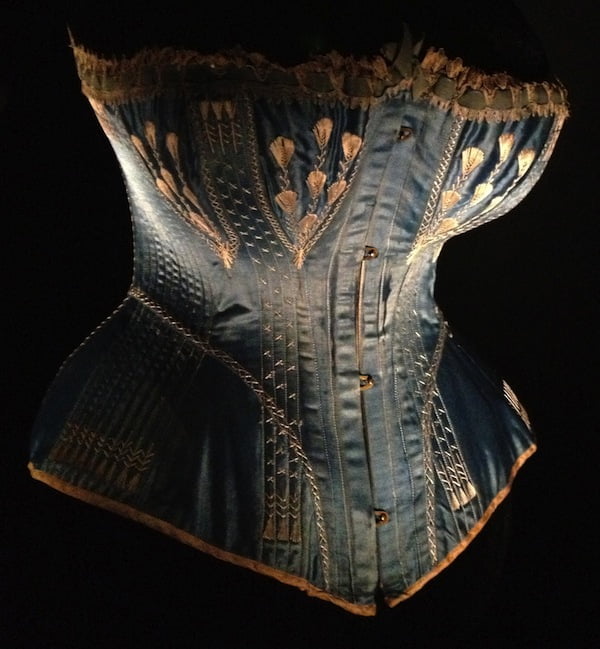
The electric blue corset is one of my favorites and one with most flossing in my collection. I bought it from an 80-year-old woman whose family used to have a corset factory in McGraw, New York.
Unfortunately, she couldn’t remember the name of the factory. I did some research and discovered that there were a few corset factories in McGraw, New York, including the MET, which has a corset very similar in their collection in burgundy silk with floral embroidery. The corset in their collection was from the 1876 Centennial exhibition and I believe the blue corset was part of the same exhibition.
I made a reproduction of the corset, which took close to year to finish as my fingers got so sore from the flossing!
What are 3 misconceptions people have about wearing corsets?
1. Corsets are uncomfortable
2. Corsets are bad for your health
3. Why would you want to wear that?
I get great pleasure from lacing people up and watching as they discover their newly-shaped bodies; their tummies flatten, their height increases and their busts lift without any discomfort.
As our conversation comes to an end, I realize that talking about corsets has made me sit up straighter. Melanie smiles knowingly and we agree to meet for a fitting next time she’s in Paris. We say goodbye and as I watch her glide out of the room, I understand the timeless elegance and subtle power of corsets.
I think Blaise Pascal had it all wrong. Vanity is anything but surface when laced up in a corset.
Behind The Seams: An Indiscreet Look at the Mechanics of Fashion
4 July – 24 November
107 rue de Rivoli, 75001, Paris
Métro: Palais Royal – Musée du Louvre Image credits.
All © Patricia Canino.
Except 4. Jean Paul Gaultier 2008-2009, © Guy Marineau.
8. Corset circa 1876, Melanie Talkington collection. Photo by Kate Kemp-Griffin.

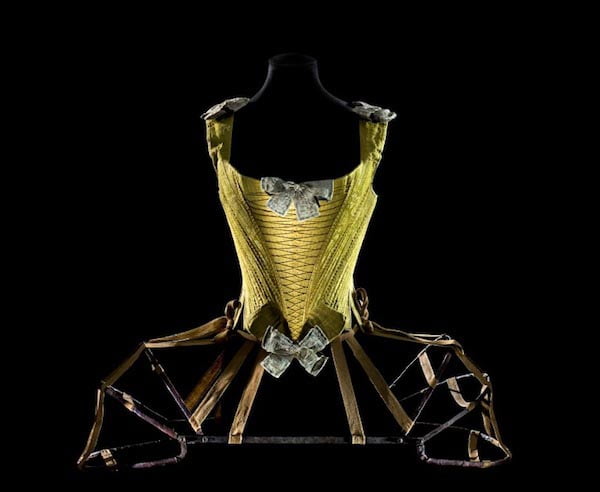
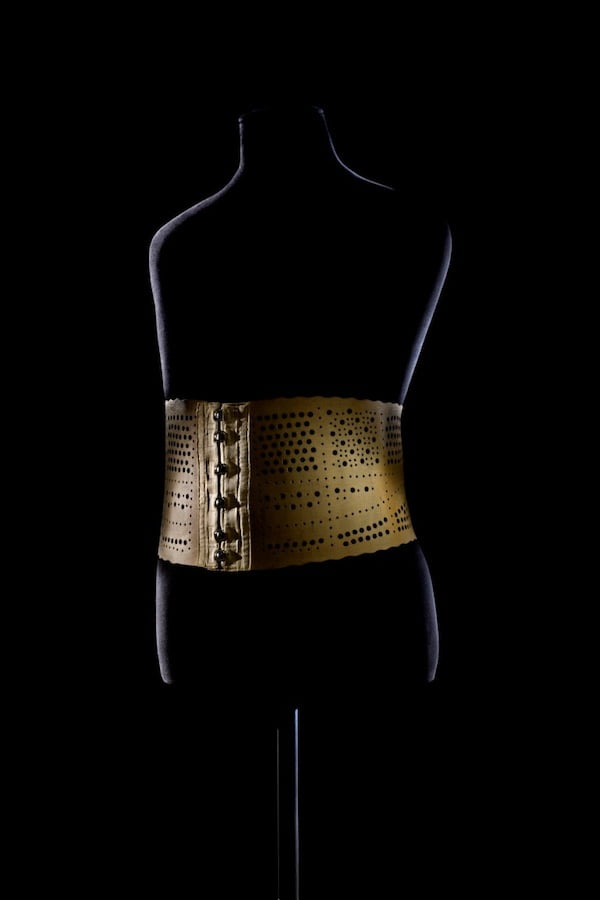
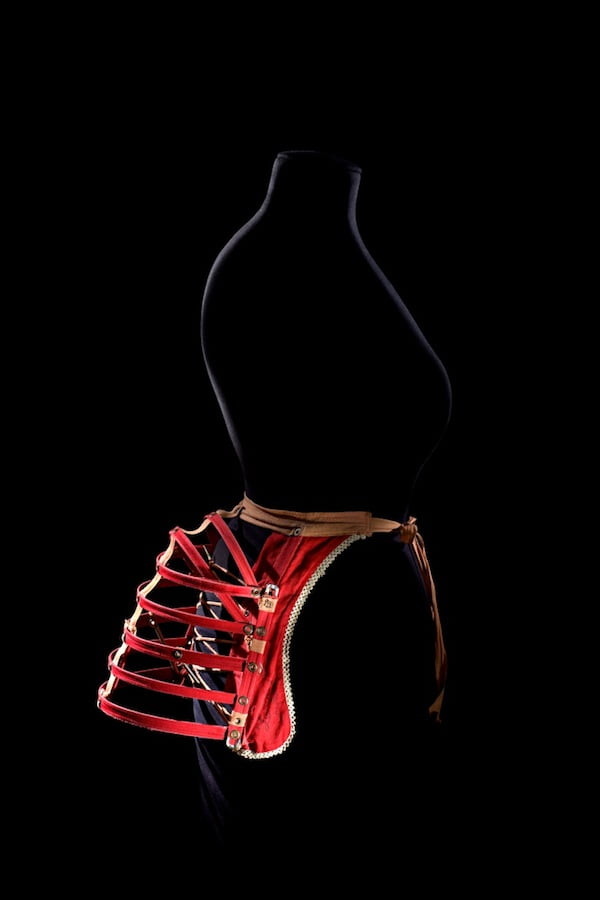
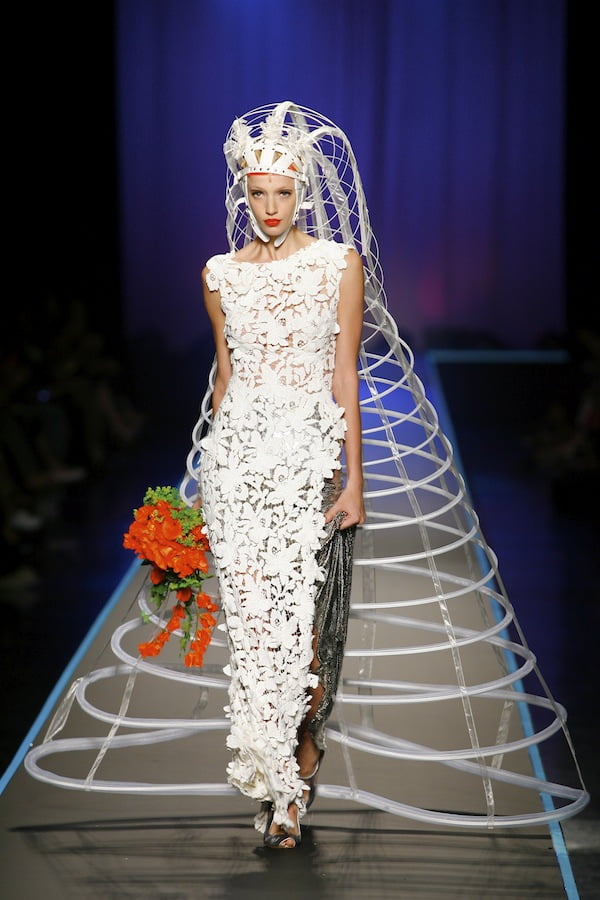
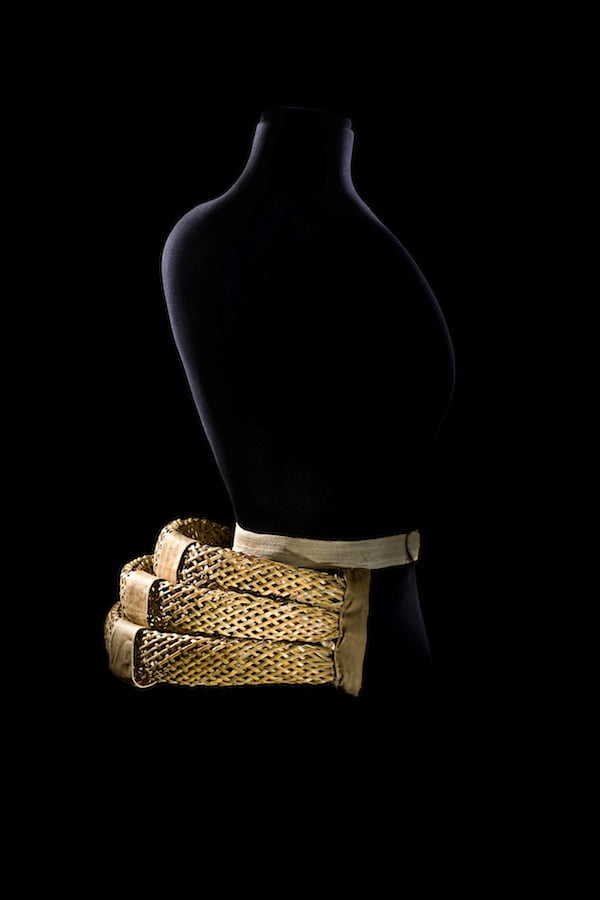
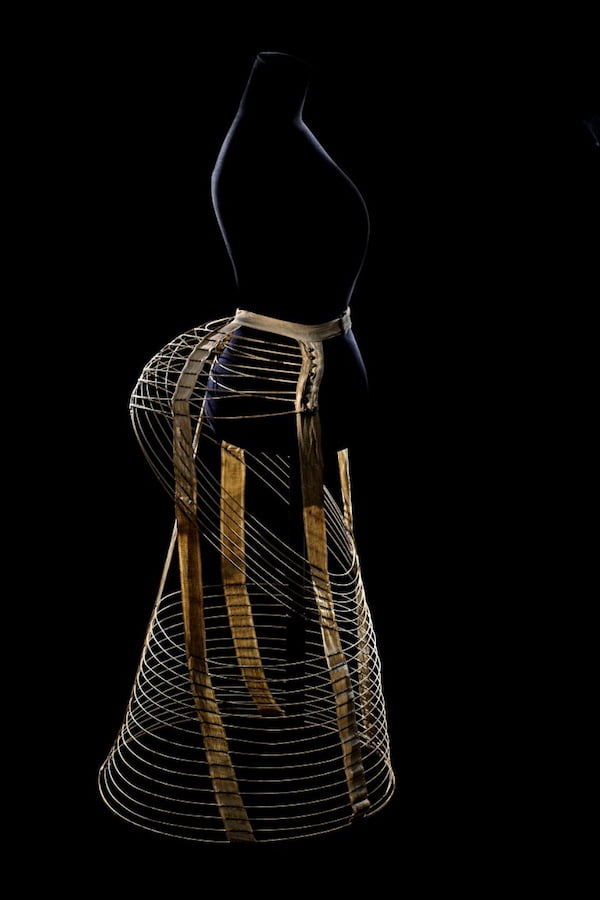
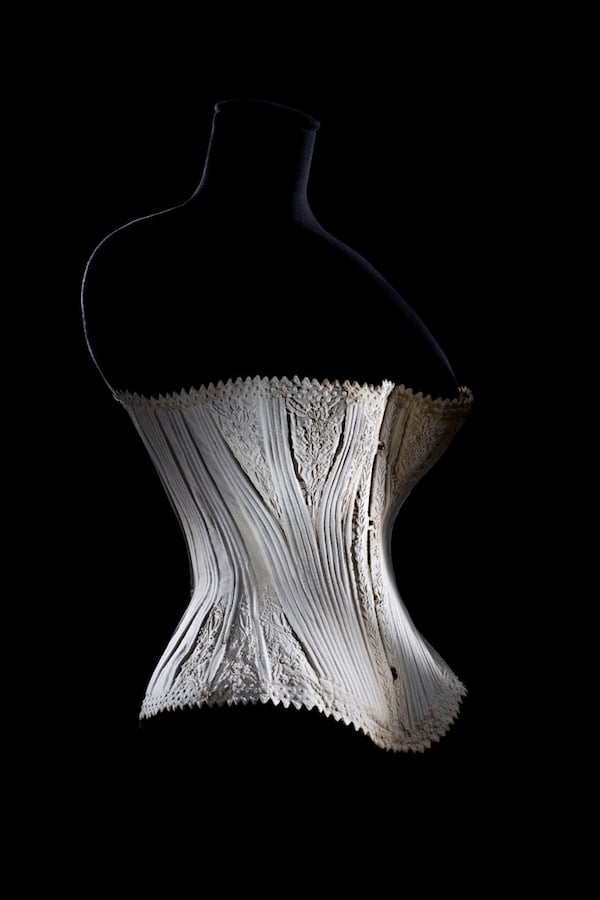






Wow, very interesting, thank you. Beautiful photos too. I have always been intrigued by lingerie, but I had no idea of the construction of corsets. Fascinating.
Agreed – really interesting!
Corsets definitely seem to be a form of art in photos like this…And considerably more beautiful than sucky-in underwear!!!